Starry fair in the al fresco of disintegrating childhood cycle…
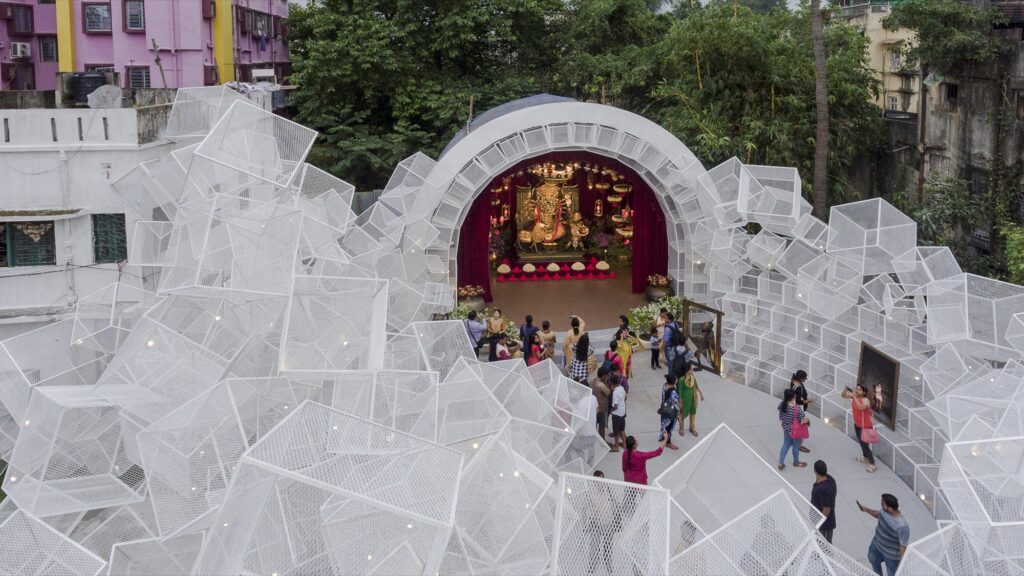
‘Children’ and ‘Childhood’ are going through a crisis in the global context. They are set in the mundane moulds of this society governed by preconceived notions of education and lifestyle. Some children are even more unlucky to lose their childhood because of political turmoil and inhuman violence. Society needs to voice its opinion on this issue. ‘Art’ can be one such very strong medium to express the concerns pertaining to the children, who are actually the future flag bearers and responsible for the progress of our civilization.


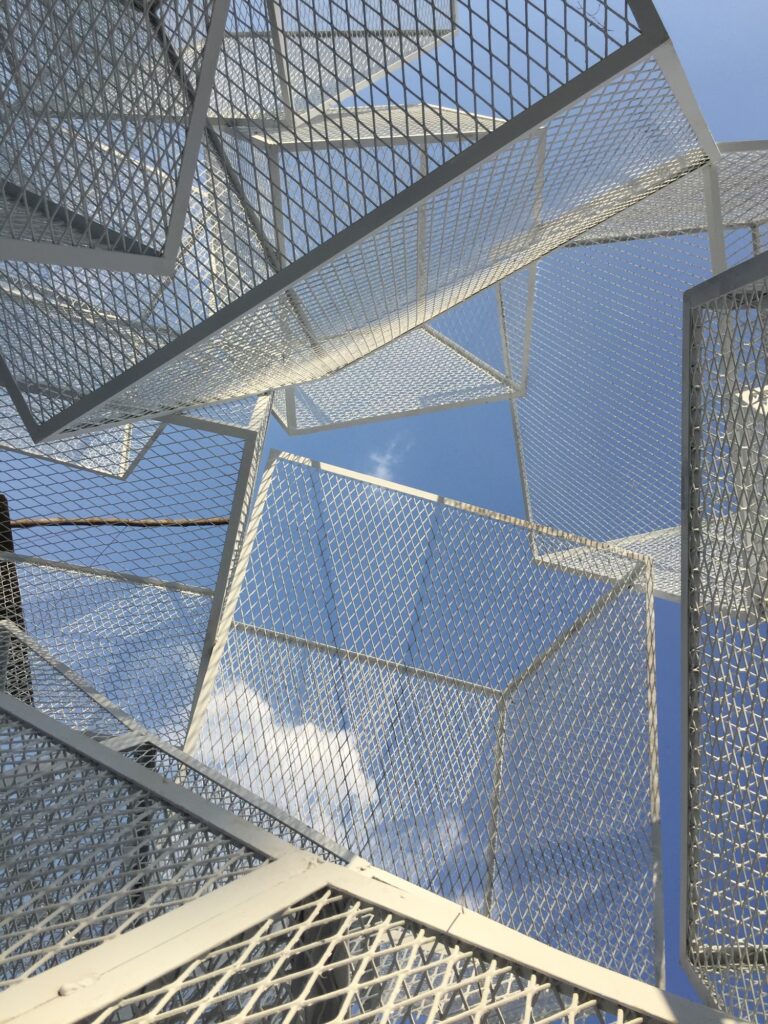

The installation is based on the idea of ‘Childhood’ – the most formative and beautiful phase of human existence. At the entrance of the installation, an abstract flight of birds overhead depicts the freedom of thought and creativity in young children. The wings gradually diminish and the birds tessellate into an array of boxes. Along with the deconstructed arrangement, the boxes put forward a commentary on the scenario of a child’s immense inherent potential getting slowly confined into a metaphorical box. The form of the installation then compels the viewer into a ‘void’, a place to sit and contemplate, in the axial presence of “Maa Durga” – the source of energy, compassion and rejuvenation. This moment for reflection is intended to stir people into rethinking about the future of our children.
The overall experience of this art installation is to demonstrate a transcendental journey of freedom, agony and joy in childhood!
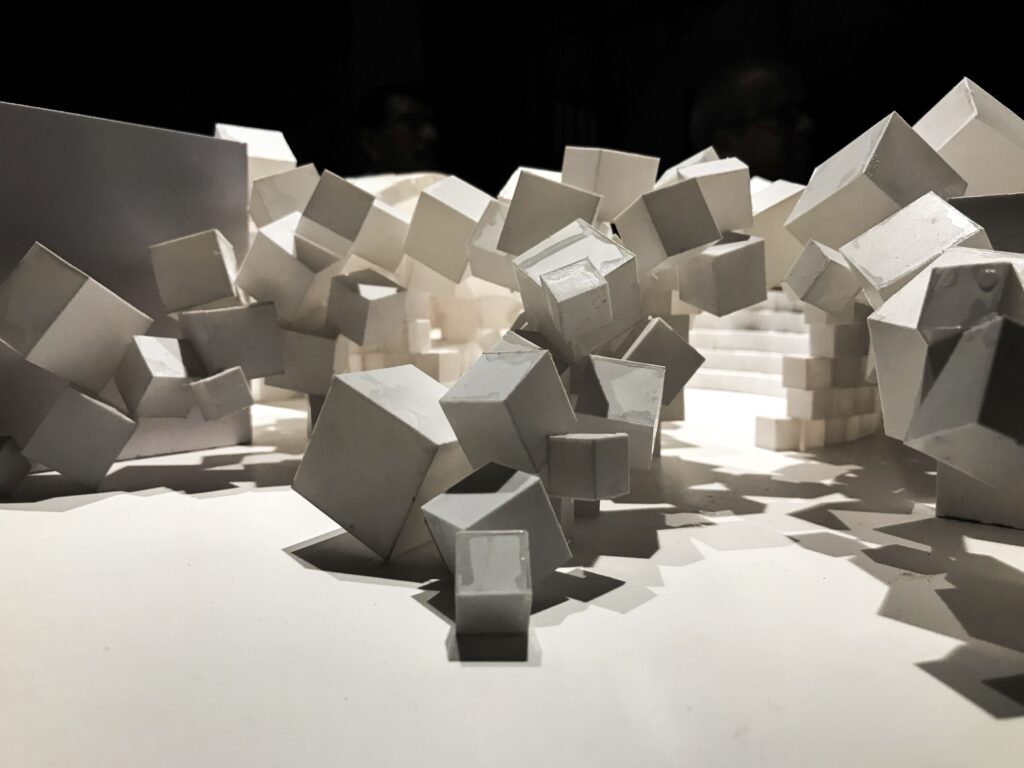

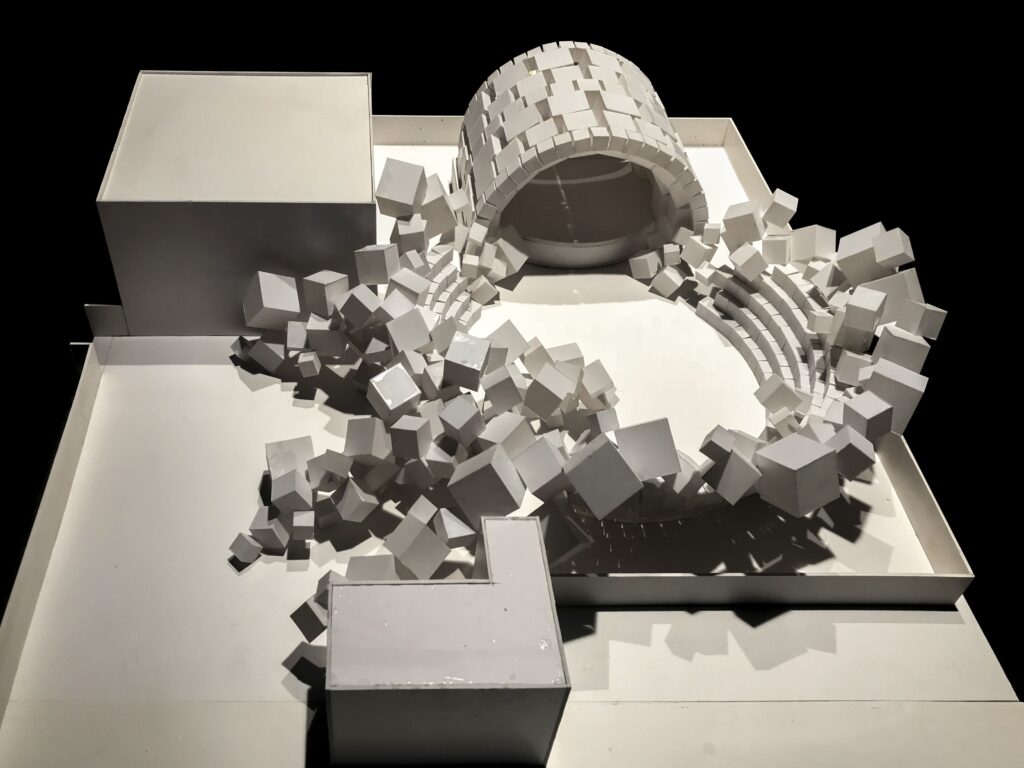
This temporal pavilion is a totally net-zero installation with all materials used 100% recyclable. The main pavilion is made of mild steel is to be dismantled and reused and the idols are made of scrap recycled metal will be retained as a sculpture for private collection or in art galleries. Other construction elements include bamboo and ply-board, also to be reused for other future pavilions. Apart from this other decorative elements are all crafted and re-used from newspaper.

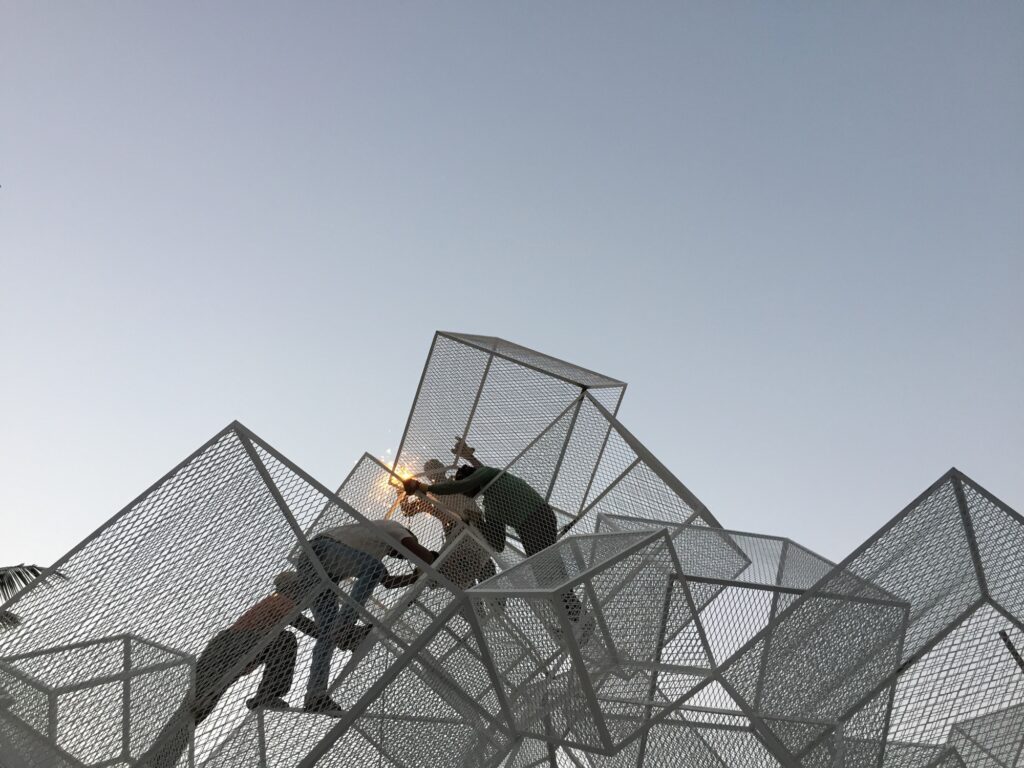


It is the first time Abin Design Studio has designed a pavilion built for the “Durga Puja”, the biggest community festival of the City. It is a collaborative effort between people across various disciplines. The first to mention among them would be the local community or ‘Para’ (in Bengali) for entrusting us this huge responsibility and their immense amount of enthusiasm. Their passion and pride has been the driving factor for all of us. Apart from this the pavilion is conceptualized between our studio team of architects along with sculptors who designed the idols and accessories, and musicians who developed the background score. The whole setup has been executed by a team of more than 50 people, engineers and fabricators, artists, technicians of light and digital projection. The whole effort has been backed and supported by volunteers of the Behala Nutan Dal Club.
Images












Drawings

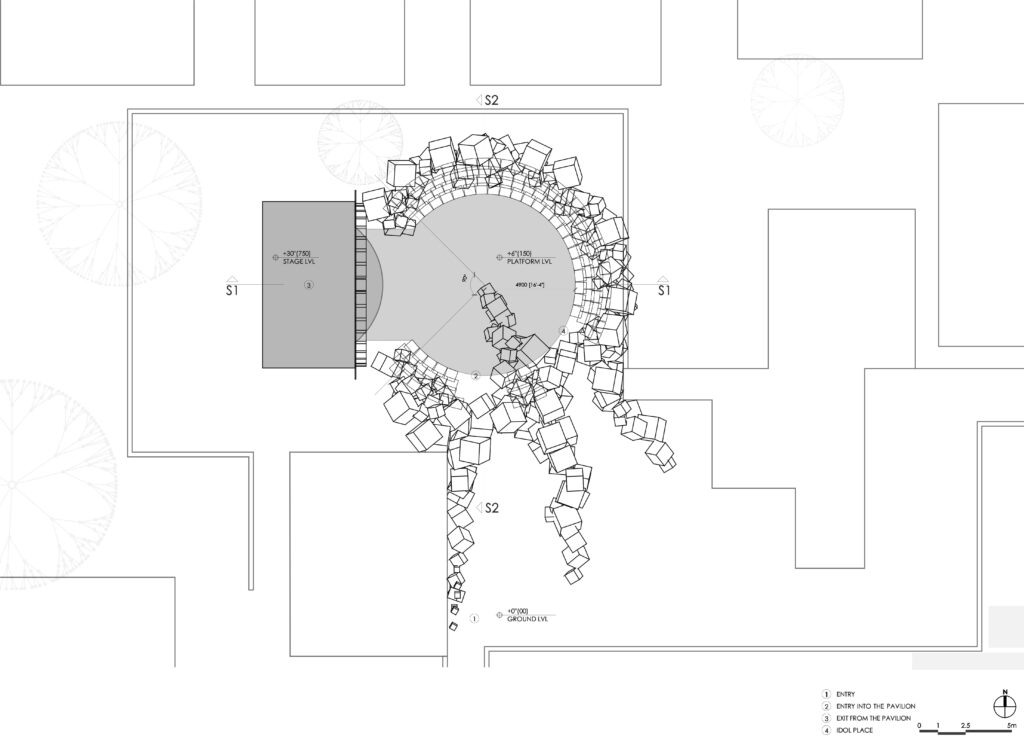

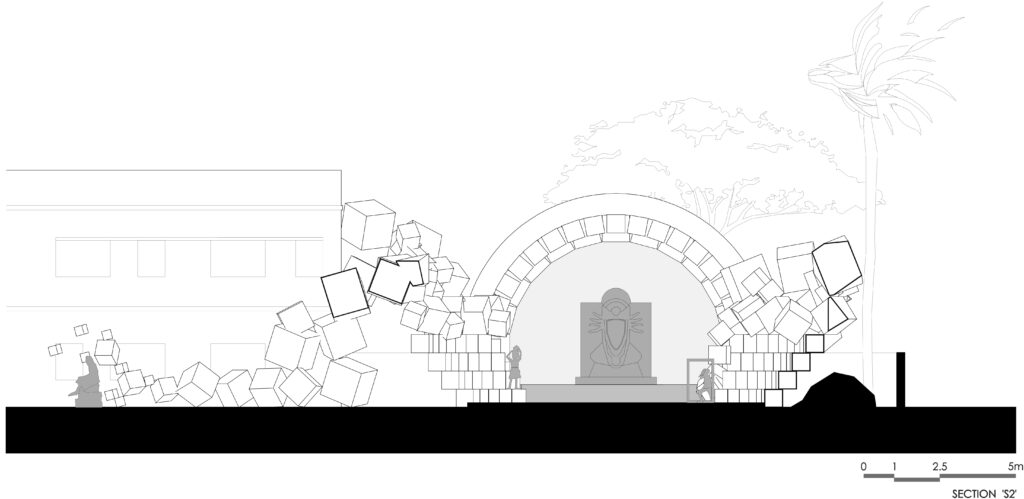
Credits:
Art Installation: Abin Design Studio
Design Team: Abin Chaudhuri, Arijit Dhar, Abhinaw Alok, Nancy Mandhan, Jibendra Basak, Toton Mondal & Sohomdeep Sinha Roy
3-D Modeling: Toton Mondal
Site and Project coordinator: Jiben Basak
Photographer: Suryan Dang, Abin Chaudhari, Sohomdeep Sinha Roy, Nancy Mandhan
Metal Fabricator: Shankar Sil and team.
In collaboration with:
Idols and Accessories: Narayan Sinha
Theme Music: Anupam Roy
In association with: Behala Nutan Dal







